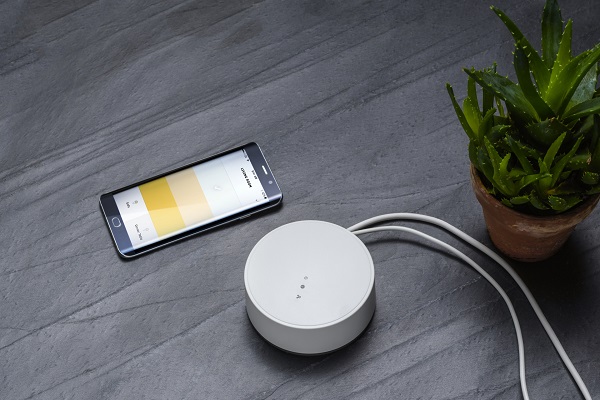Ikea Assembles Smart Home Future Into New Business Unit

Ikea is connecting all of its smart tech developments into a new single business unit. The home goods juggernaut announced in a blog post that it plans to invest a lot of resources into the new Ikea Home business unit to build a future of smart homes.
Swedish Smart Homes
Ikea first started working on smart devices back in 2012 but has been ramping up its offerings and digital connections over the past couple of years. In 2017, Ikea started selling smart lights in collaboration with Amazon, Google, and Apple, controllable by what was first called the TRÅDFRI app. This year, Ikea renamed it the Ikea Smart home app and started selling smart speakers in partnership with Sonos.
“They’re trying to get a digital presence in our homes. Globally, one of the most ubiquitous things in people’s homes is Ikea furniture. So, it makes a lot of sense that they could become one of the major smart home platforms,” said Darin Archer, the chief strategy officer at e-commerce software developer Elastic Path in an interview with Voicebot. “I think it will eventually be that you’re talking to Ikea embedded across a lot of products.”
Ikea said in the announcement that the smart home unit will be their biggest investment since the creation of a separate unit for children’s items. The new unit will join the ten existing business units, including Lighting, Textiles, and Ikea Food.
Ask the Ikea Cabinet to Order Meatballs
The next step will likely be an Ikea voice assistant, Archer said. While Amazon Alexa, Google Assistant, and Apple Siri voice assistants can all be used to control some of Ikea’s smart products right now, but that will change soon, according to Archer.
“Phase one is partnering with other technology makers. Phase two is to bring it all in-house,” Archer said. “You can see the patterns with what Ikea did with chargers and smart lights. Gradually, some of those products started to change out and were replaced with the Ikea brand. That’s their business strategy.”
Controlling the User Experience and Relationship
This is consistent with Voicebot’s hypothesis that many large brands will soon build their own voice assistants that will be optimized for their user base, products, and services. In essence, they will be an extension of the company. Bank of America, Capital One, and Mercedes have already done this with virtual assistants Erica, Eno, and Hey Mercedes respectively. Two of the three also boast Alexa integrations as well. For many brands, presence on Alexa and Google Assistant will be the point of introduction to the potential of voice assistant-enhanced customer relationships. Voicebot outlined this strategy, its likely adoption and the rationale behind it in more detail in Voice Insider issue #25 and issue #28.
Archer described how he thinks an Ikea voice assistant connected to Ikea products would be useful for expanding the voice commerce market for the company. It would already know what a user has bought from Ikea previously, so it would be possible to simply ask it to “buy more of the flatware I bought last time,” or any other item someone has picked up from Ikea. This is similar to the value proposition that Amazon often touts about Alexa and its integration with Prime membership data. Providing your own voice assistant enables you to add new services for customers while controlling the user experience and relationship.
Archer said he would expect the first announcement about an Ikea voice assistant as early as this winter. The real question is what Ikea, famous for its idiosyncratic naming of every product it makes, would call its voice assistant.
“I’m sure they will name it some cute Swedish word,” Archer said. “It will be great as long as it can deliver meatballs.”
Follow @voicebotai Follow @erichschwartz








